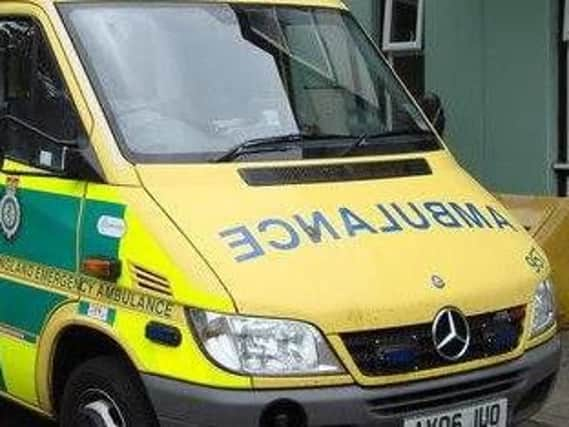Concerns over ambulance cover in East Antrim


Mid and East Antrim councillor Jim Brown raised the issue during a meeting of the local government authority on May 8.
Speaking in support of a motion to mark the upcoming 70th anniversary of the NHS, Cllr Brown said an ambulance crew member had informed him there was “no emergency cover in Larne, Carrickfergus or Newtownabbey” on two evenings during the previous week, April 30 and May 1.
Advertisement
Advertisement
He added: “The best tribute we can give as a council is to call for investment in services to ensure that finance is made available. We need to support the providers to stand with the ambulance men, stand with the nurses to ensure that services are being delivered responsibly and economically.”
Responding, a spokesperson for the Northern Ireland Ambulance Service said: “NIAS can confirm that on the evenings of April 30 and May 1, full cover was not available in Larne Ambulance Station. One member of staff was available and, in order to maximise cover in the East Antrim area, he was temporarily located to a neighbouring station to increase the number of available crews in the area.
“Ambulance Control monitor response patterns in each area and seek to ensure that the most appropriate response is provided as quickly as possible. On the evening of May 2, full cover was available in Larne Ambulance Station.”
Last month, East Antrim MLA and Ulster Unionist Health spokesperson, Roy Beggs, has warned that the continuing deterioration in ambulance response times was "putting public safety at risk".
Advertisement
Advertisement
“The importance of ambulances and paramedics arriving on time really cannot be emphasised enough. The longer someone has to wait for assistance in an emergency, the greater the risk there is of them coming to serious harm," he said.
“The Northern Ireland Ambulance Service describes Category A calls as ‘the most serious calls, where there is, potentially, an immediate threat to life.’ It is outrageous therefore, that whilst the official target is that 72.5 percent should be responded to within eight minutes; in January 2018 only 39 percent of calls were met within this time.
“It’s obvious that our Ambulance Service is facing unprecedented pressures and dangers. Whilst patients are suffering, it’s also completely unfair to be putting our paramedics in this situation."
A spike in demand for ambulance services is one of the main factors behind increased response times, according to NIAS. “The Northern Ireland Ambulance Service acknowledges the increase in Category A ambulance response times over the past number of years, and in particular over the past winter which was one of the most challenging across the Health and Social Care system in recent years," the spokesperson added.
Advertisement
Advertisement
"The main reason for this increase in ambulance response times is the year on year increase in demand for our service. The number of calls to the Ambulance Service has increased from 150,093 in 2012/13, to 220,090 in 2017/18, an increase of 46 percent.
"Another factor contributing to increased ambulance response times is the length of time it takes to handover patients to Emergency Departments which has also been increasing in recent years due to the pressures across the wider Health and Social Care system."
In order to address the issue, the ambulance service undertook a "detailed demand and capacity analysis" to establish the level of additional capacity required to meet demand within the target timescales.
Proposals were developed for a new clinical response model to provide the most urgent response to the most clinically urgent patients.
Advertisement
Advertisement
"This proposed new model is based on similar models introduced elsewhere in the UK which have proved effective and indicate improved patient outcomes," the NIAS spokesperson added.
"NIAS has presented the proposed new clinical model to the Health and Social Care Board which has confirmed its support for the new model and recommended it to the Department of Health. The Department is currently considering this proposal, including that NIAS should lead a public consultation on its introduction.”